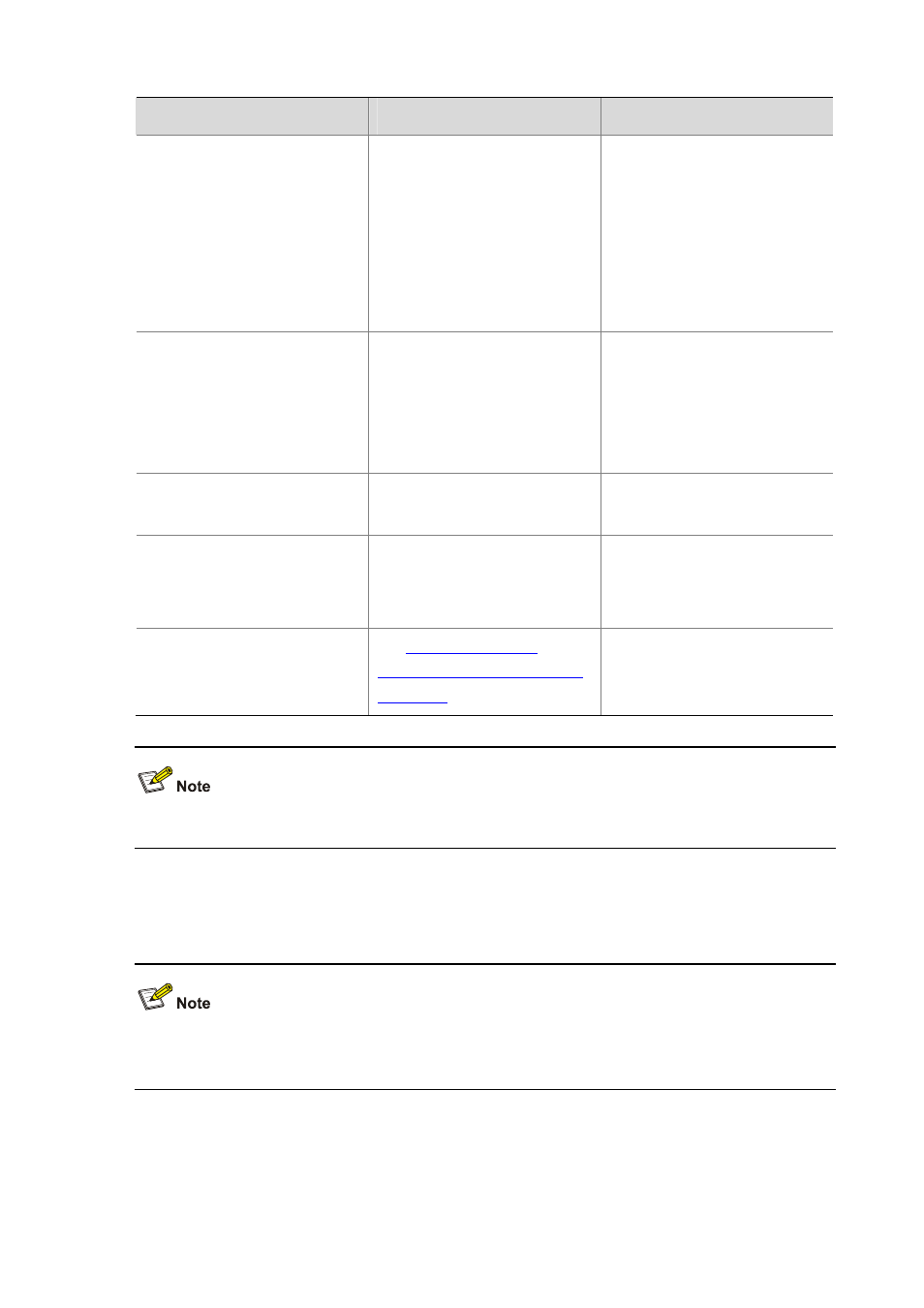Configuring a udp jitter test – H3C Technologies H3C S7500E Series Switches User Manual
Page 32

2-12
To do…
Use the command…
Remarks
Configure the source IP address of
a probe request
source ip ip-address
Optional
By default, no source IP address is
specified.
The source IP address must be
that of an interface on the device
and the interface must be up.
Otherwise, the test will fail.
Configure the operation type
operation { get | post }
Optional
By default, the operation type for
the HTTP is get, which means
obtaining data from the HTTP
server.
Configure the website that an
HTTP test visits
url url
Required
Configure the HTTP version used
in the HTTP test
http-version v1.0
Optional
By default, HTTP 1.0 is used in an
HTTP test.
Configure common optional
parameters
Optional
The TCP port number for the HTTP server must be 80 in an HTTP test. Otherwise, the test will fail.
Configuring a UDP Jitter Test
It is recommended not to perform an NQA UDP jitter test on known ports, namely, ports from 1 to 1023.
Otherwise, the NQA test will fail or the corresponding services of this port will be unavailable.
Real-time services such as voice and video have high requirements on delay jitters. With the UDP
jitter test, uni/bi-directional delay jitters can be obtained to judge whether a network can carry real-time
services.
